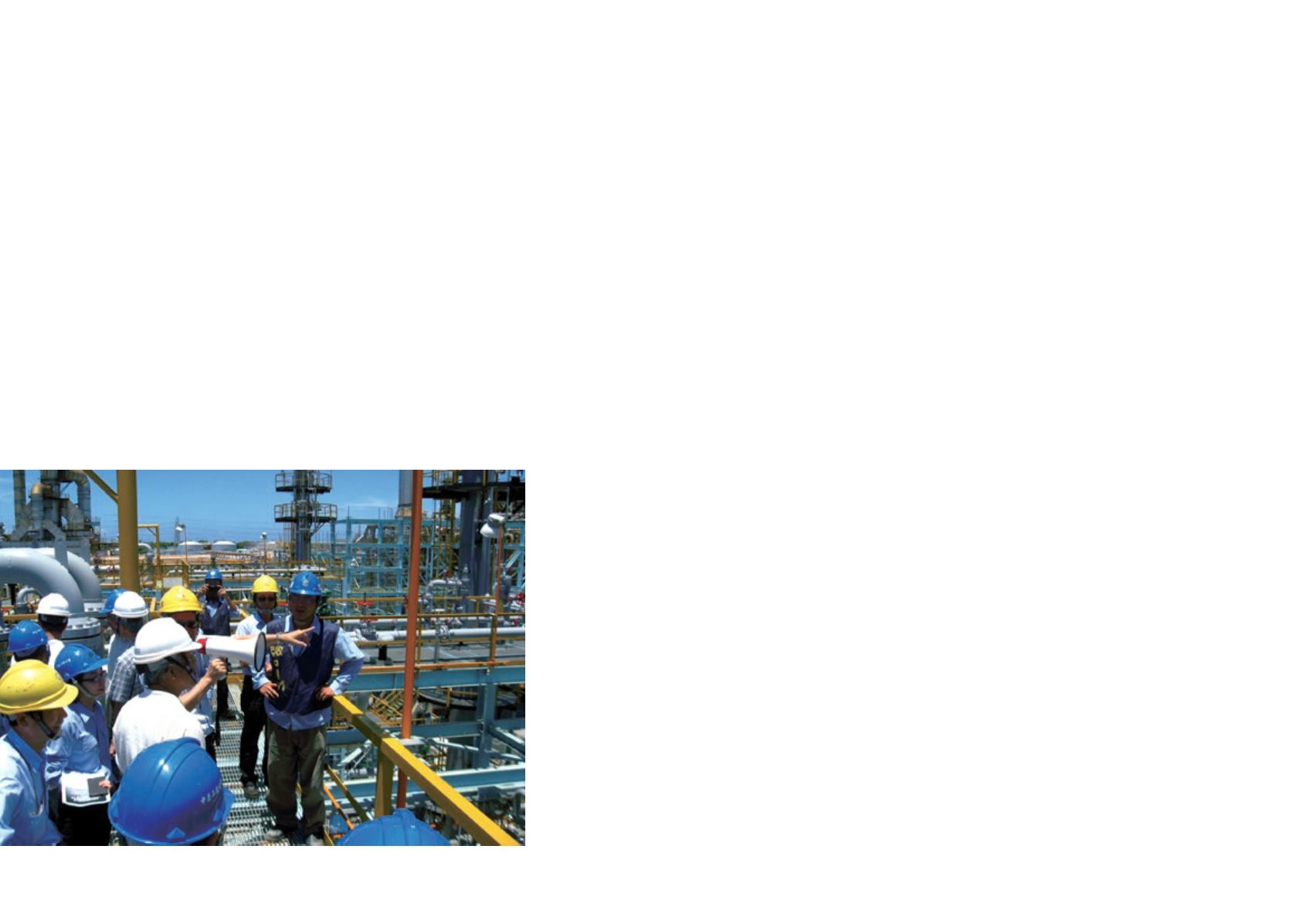
CH. 4 Professional Engineering Service
71
system. Taking advantage of the pressure differences led by
the break drum, such an innovation allows for the recycling
of environmentally harmful acid gases, and can effectively
prevent acid waste gases from being discharged into the
ground flare. This innovation can be regarded as a new
application of traditional processing technology.
Optimization 1: Adoption of the Advanced Hijector
Gas Compression System
CTCI has consistently improved its recovery system. For
example, as with most plants, the waste gas recovery system
in the past used a liquid ring compressor. Drawbacks of this
include its complicated maintenance, a high cost, large
space requirement, and relatively longer delivery time of the
equipment. For the FGRS Project, CTCI adopted the most
advanced and highly durable equipment on the market —
i.e., the High Performance Ejector (Hijector) which uses the
principle of high-pressure water jet to induce waste gases
into the recycling system for processing.
CTCI’s FGRS Project Manager, Chih-Chien Chen, noted,
"Hijector uses a high-pressure water ejector for rapid
injection, bringing the waste gas from flare line to the system.
After mixing waste gases and water, the gases and water
together go into the waste gas recovery system, replacing
the traditional method of drawing gases
with a high-energy consuming compressor.
Moreover, Hijector is also highly stable, highly
durable, and possesses other attributes such
as having a simple structure along with lower
maintenance costs. Hijector can also handle
gases containing suspended particles without
affecting its performance, reducing time of
start-up, and no pollution problems with the
lubricating oil.
Optimization 2: Improving Water
Circulation with a High-Performance
Three-Phase Separator
When high pressure forces waste gases
into a three-phase separator, the waste gas,
waste water, and oil are separated, recycled,
or reused. Proposal Division Assistant
Engineer, Lu XinJi, said, “In the past, an oil-
water or a gas-water two-phase separator
was generally used. In this project, a high-
performance three-phase separator was
especially used to allow for a self-purifying loop of acid water,
improve water circulation, and reduce waste water discharge.”
First, waste gases were collected from the Talin flare
system and the first recycled gases were turned into fuel
gases and reused. Part of the acid water discharged from the
three-phase separator was then imported into an oil-water
separator. Part of the acid water flush boils into gases and
was then returned to the main pipe.The remaining liquid was
then used with a circulator pump and injected into the three-
phase separator consisting of a self-purifying loop of acid
water.This process improved water circulation, and works on
the same principle as dialysis purification.
Apart from reducing emissions and water supplements
and the concentration of hydrogen sulphide, which helps
to reduce corrosion and extend equipment life, the other
advantage of building a self-purifying loop of acid water is that
it increases the amount of recycled fuel gases and reduces
the impact of emulsification on the system.
Optimization 3: Simulate-Optimized Design of Amine
Amount with ProMax
What’s more, the project also used ProMax software
to simulate and control the temperature of waste gas into
the amine-scrubbing tower in order to lower the volume
concentration of discharged hydrogen sulphide to less than
80ppm and conserve 20% of amine liquid consumption.
Optimization 4 Analog Waste Gas Discharge with
DYNSIMSystem
DYNSIM, a dynamic-simulation software, calculates the
dynamic discharge conditions of the main waste gas pipe
pressure. It does this according to the setup of stop setting


